
This comparison is a part of the 2025 trail bike of the year tournament. Stay tuned for future matchups and to see which bike moves on to the next round!
When comparing short-travel trail bikes, the conversation often centers on how much capability you can pack into a lightweight, efficient package. The Pivot Trailcat LT and Ibis Ripley both answer that question using Dave Weagle’s renowned DW-Link suspension design, but their approaches diverge in meaningful ways. This comparison focuses on what matters most when choosing between these frames: geometry, suspension travel, and frame features. Price and component spec are important too, so we’ve chosen two builds that are priced comparably for the chart below.
| Ibis Ripley v5 GX Eagle Transmission | Pivot Trailcat LT GX Eagle Transmission | |
|---|---|---|
| Suspension travel front/rear | 140/130mm | 150/135mm |
| Drivetrain | SRAM GX Eagle AXS Transmission | SRAM GX Eagle AXS Transmission |
| Suspension | Fox Factory Float SL 36 fork, Fox Factory Float w/EVOL shock | Fox Performance 36 fork, Fox Performance Float X shock |
| Geometry (size large frame) | HTA: 64.9° STA: 77.4° Reach: 511mm Chainstay: 440mm | HTA*: 65.3° STA**: 75.6° Reach: 475mm Chainstay: 433mm |
| Price | $7,249 | $7,399 |
Suspension travel and category positioning
The most obvious difference between these bikes is their suspension travel, though the gap is smaller than you might expect.
The Pivot Trailcat LT, a new model that was introduced this year, runs 135mm of rear travel paired with a 150mm fork, placing it at the more capable end of the trail bike spectrum. Pivot designed the Trailcat platform to offer two distinct personalities—the SL with 120mm rear travel and the LT with 135mm—using the same front and rear triangles but different upper links, shock hardware, and fork configurations. The LT uses a 185x55mm trunnion-mount shock and is designed exclusively for air shocks due to its leverage curve. Pivot says the frame can accommodate up to a 160mm fork for riders who want to push the bike further into enduro territory.
The Ibis Ripley v5, released in 2024, offers 130mm of rear travel with a 140mm fork. While that’s only 5mm less in the rear and 10mm up front compared to the Trailcat LT, Ibis positions the Ripley as a pure trail bike that prioritizes efficiency and versatility over aggressive descending capability. (The Ibis Ripmo is the more aggressive descender and uses the same frame as the Ripley, just with a different fork, shock, and clevis.) The Ripley features a 210×52.5mm shock and, notably, Ibis specifically engineered the bike to accommodate both air and coil shocks—a flexibility that the Trailcat LT doesn’t offer.
Both bikes utilize DW-Link suspension, which is known for efficient pedaling without sacrificing traction. However, the bikes have different shock mounting configurations and leverage ratios to achieve their respective goals. The Trailcat LT’s higher progression is designed to make the most of its air shock, while the Ripley’s “Traction Tune” shock features a lighter shock tune to help the rear wheel track terrain more effectively.
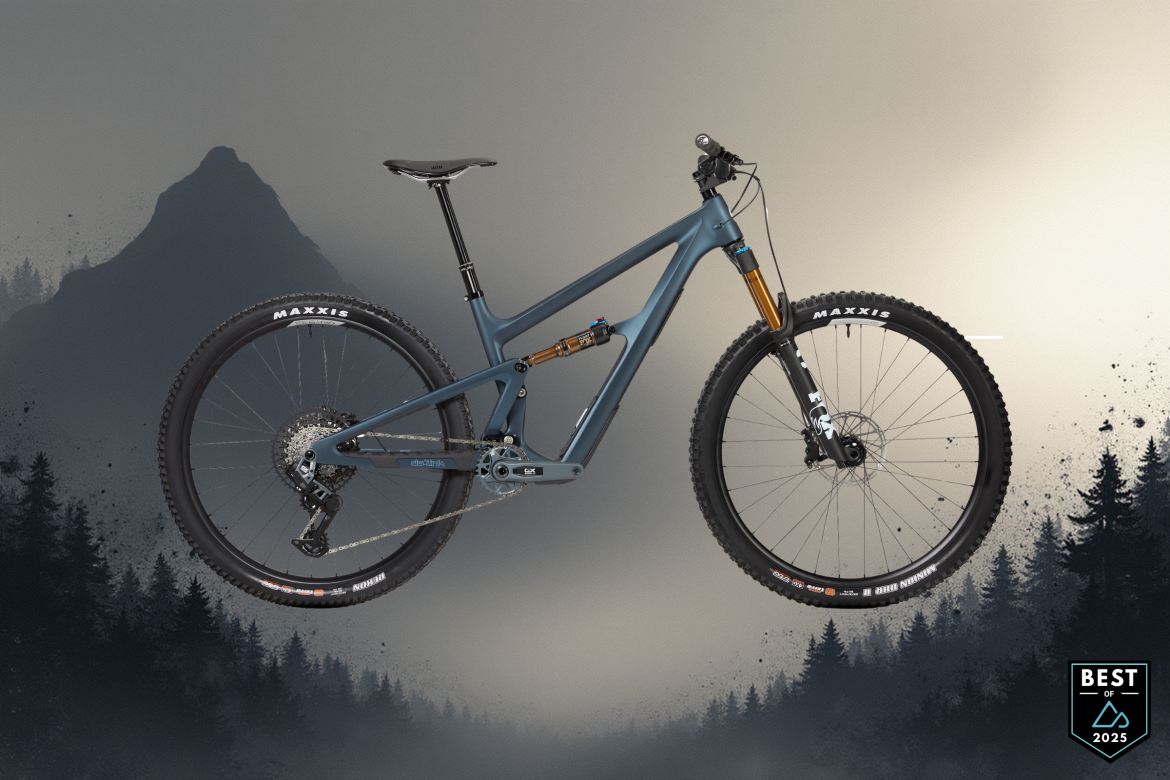
Geometry: Progressive vs. playful
On paper, these bikes share some similarities, but the differences reveal their distinct personalities.
The Pivot Trailcat LT features relatively conservative geometry by modern standards. In the low position, the size large frame gets a 65.3-degree head tube angle, 75.6-degree (effective) seat tube angle, 475mm reach, and 433mm chainstays. The bike is available in five sizes (XS through XL) with reach figures spanning 405mm to 495mm (low position), and Pivot says the smallest Trailcat frame fits riders down to 4’10”. Chainstays are size-specific, ranging from 431mm on XS-M frames to 435mm on the XL.
The Ibis Ripley runs slightly slacker and longer. Its size large frame features a 64.9-degree head tube angle, 77.4-degree seat tube angle, 511mm reach, and 440mm chainstays. Ibis offers five sizes as well, including a new “extra-medium” size that splits the difference between their traditional medium and large. Reach figures span 440mm to 545mm (!) across the size range. And the Ripley’s chainstays are also size-specific, growing from 436mm on the small to 442mm on the XL.
Both bikes feature low bottom brackets for stability and cornering confidence. The Trailcat LT sits at 340mm in the low position (334mm in high), while the Ripley’s effective bottom bracket height is 335mm with a 39mm drop.
Chainstay length reveals another philosophical difference. The Trailcat LT’s shorter stays (431-435mm) deliver a more playful, easier-to-manual feel, while the Ripley’s longer stays (436-442mm) prioritize climbing traction and high-speed stability.

Adjustability: Flip chips and wheel options
Both bikes offer geometry adjustment, though the implementations differ.
The Ibis Ripley includes a flip chip system that’s designed to ensure the geometry stays consistent whether you’re running a 29-inch or 27.5-inch rear wheel. All frame sizes ship with matched 29-inch wheels, and perhaps as a result, Ibis recommends their smallest frame for riders who are at least 5′ tall.
The Pivot Trailcat LT features a two-position flip chip in the upper linkage that adjusts both head tube angle and bottom bracket height, which riders can use to change the character of the bike, or to run mixed wheels. Flipping from low to high position raises the BB by 6mm and slackens the head tube angle by 0.3 degrees and seat tube angle by 0.4 degrees. Size extra small bikes are only available in a mixed-wheel configuration.
Both bikes can accommodate a range of fork travel. The Trailcat LT is optimized for 150mm but can run up to 160mm. The Ripley is designed around 140mm but is compatible with 130-150mm forks.
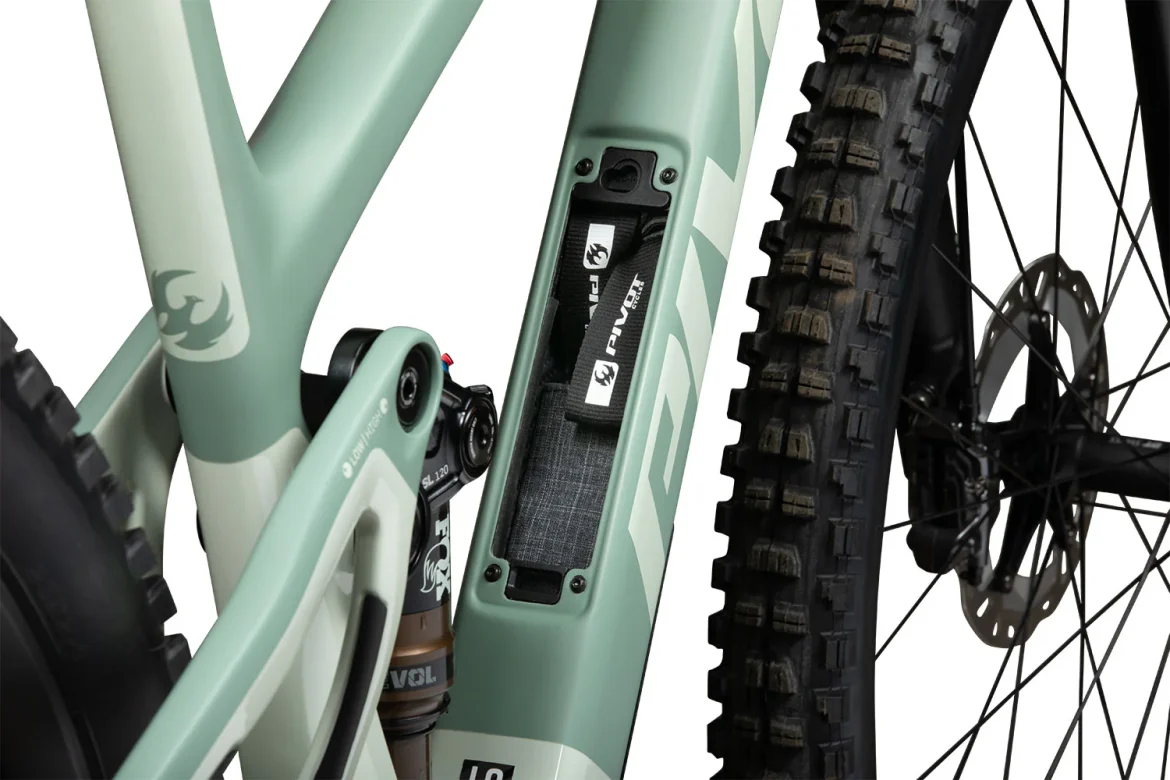
Frame features
Both manufacturers have invested in thoughtful frame features that go beyond basic suspension and geometry.
The Pivot Trailcat LT uses Pivot’s new Toolshed downtube storage system, which opens up the entire downtube for carrying tools and essentials. The system includes two custom storage bags and features a door that can be flipped to lower the bottle mount position if needed. The frame also features Pivot’s Dual Cable Port design with a single large port at the head tube and integrated cable clips around the Toolshed area. The Trailcat LT uses a press-fit bottom bracket (BB92) and Super Boost Plus 157mm rear hub spacing. Pivot offers a lifetime warranty on the frame and bearings.
The Ibis Ripley features the STOW (Snacks, Tools, or Whatever) internal frame storage system with an easy-to-operate latch. Ibis partnered with Cotopaxi to create two colorful internal storage bags made from sustainable remnants. The frame uses a threaded bottom bracket (73mm BSA) and standard Boost 148mm rear hub spacing—making wheel sourcing significantly easier than Pivot’s Super Boost configuration. Like Pivot, Ibis offers a lifetime warranty on both the frame and bearings, with lifetime replacement on bushings as well.
The Pivot Trailcat LT frame is only available in carbon fiber, while the Ibis Ripley AF — updated this year to match the carbon Ripley — gives buyers the option of an aluminum frame.
Both frames feature straight, uninterrupted seat tubes that accommodate long-travel dropper posts. Both use SRAM’s Universal Derailleur Hanger (UDH) and feature multiple bottle cage mounting points.
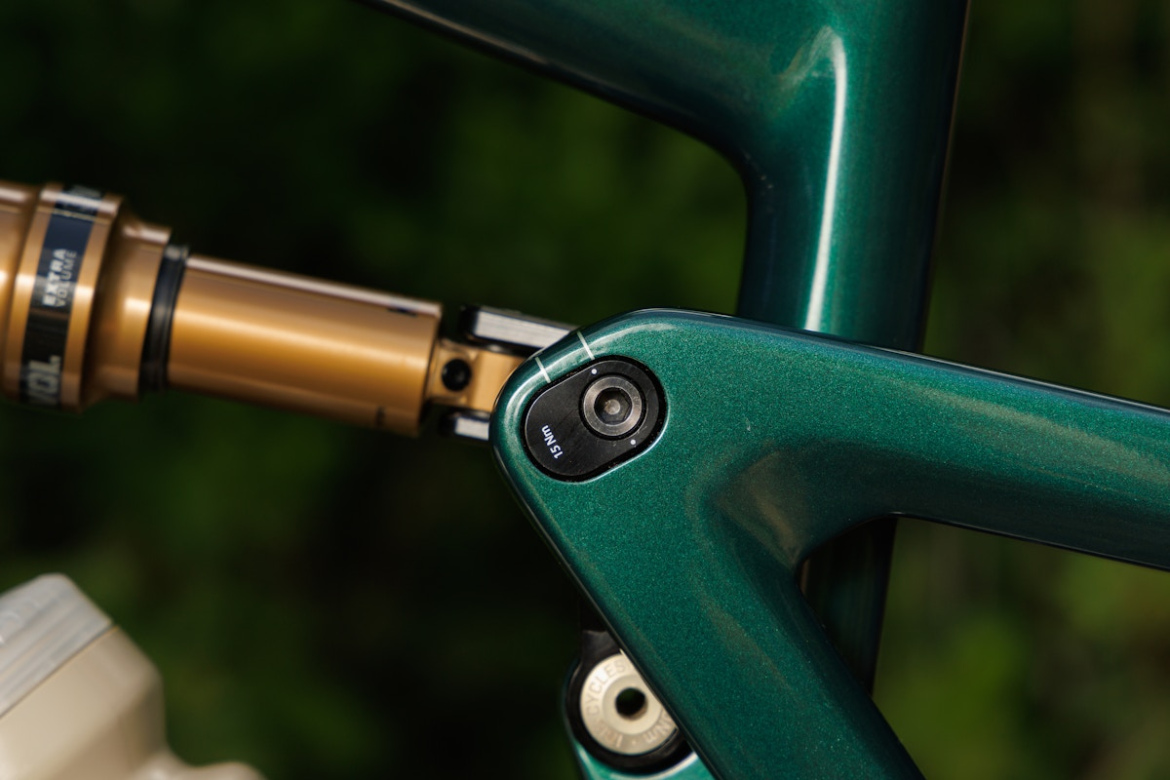
The bottom line
These are two excellent trail bikes that use the same suspension platform to achieve notably different ride characteristics.
The Pivot Trailcat LT is the more aggressive option. Its extra 5mm of rear travel and 10mm of fork travel give it more capability on rough descents, while its shorter chainstays and slacker seat tube angle create a playful, off-the-back riding position. The Toolshed storage system is well-executed, though the press-fit bottom bracket and Super Boost hub spacing may give some riders pause. Frame weights start at 5.3lb without shock.
The Ibis Ripley is the more versatile, maintenance-friendly option. Its slightly slacker head tube angle, longer chainstays, and steep seat tube angle create a stable, efficient package that climbs exceptionally well. The threaded bottom bracket and standard Boost spacing make long-term ownership easier, and the compatibility with both air and coil shocks offers more tuning options. The Ripley’s frame weight is 7.3lb (size extra-medium with shock).
Ultimately, your choice depends on your riding style and priorities. Want a more aggressive bike with shorter chainstays for a playful feel? The Trailcat LT delivers. Prefer slacker geometry, easier maintenance, and better parts compatibility? The Ripley makes a compelling case. Both will handle demanding trail riding with confidence—you really can’t go wrong with either bike.
We’ll reveal which bike moves on to round two on November 21 when the winner takes on the winner of the Specialized Stumpjumper 15 EVO vs. the Canyon Spectral.












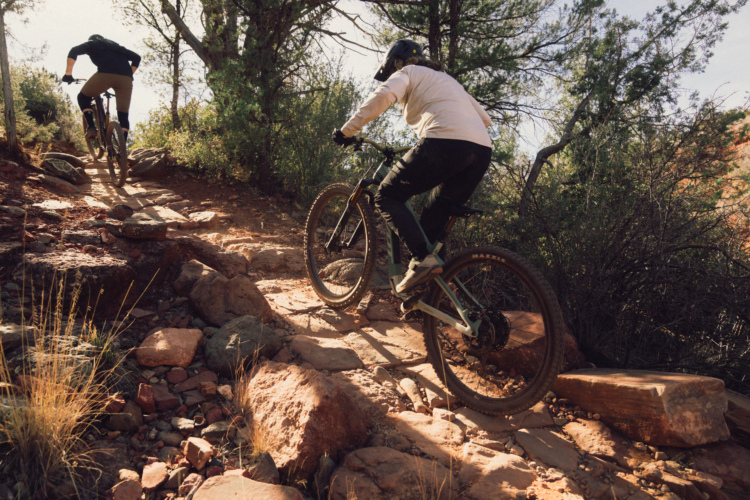


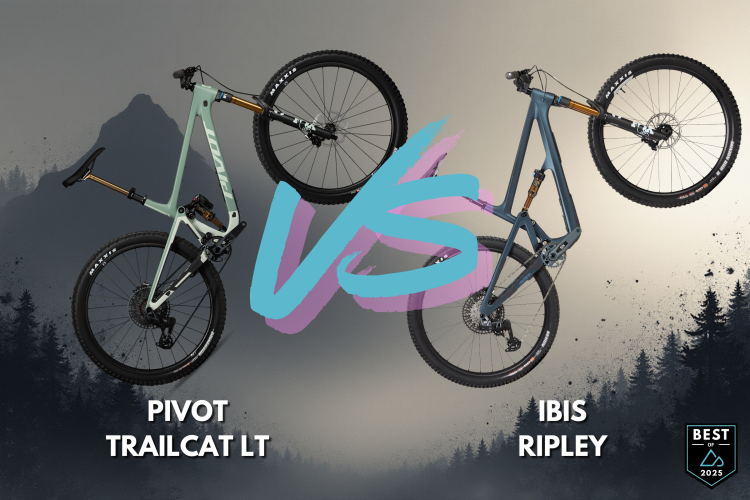




0 Comments